Gardens are a place where we grow our favorite plants in a specific manner. It is a place that will always soothe your mind and feed your soul. But talking of Mughal gardens gives us a picture of lavish gardens with rare plants, designed so beautifully that a single leaf does not look out of the place. And India has been the epitome of Mughal culture from mosques, domes, architectures, to gardens. Their cultural legacy is still very prominent are several historical places in India.
The founder of the Mughal Empire, Babur, described his favorite type of Garden as ‘char bagh.’ The style is an inspiration, particularly from Persian gardens. The structure significantly intends to create a representation of an earthly utopia where humans co-exist in perfect harmony with all elements of nature.
The gardens have an intricate design, including canals laid out, fountains, running waters, and hillocks surrounded by pavilions. So here is a list of the top 11 Mughal gardens in India worth a visit:
1. Shalimar Bagh, Shrinagar

Shalimar means the ‘adobe of love’ indeed it is. Mughal emperor Jahangir built it for his wife Nur Jahan in 1619, and this bagh is the high point of Mughal horticulture, according to historians.
It is 12.4 hectares in area and has three terraces. The terrace of the Garden has a black pavilion that has inscription sin Persian by poet Amir Khusrow.
2. Taj Mahal Garden, Agra

Taj Mahal is one of the seven wonders in the world, and its Garden is an inevitable part if it that contributes a lot to its wonderfulness. A 300 sq. Meter complex with the char bagh layout and raised pathways that divide each of the four quarters of the Garden into 16 sunken patterns of flowerbeds.
Like most of the Mughal gardens, it has a central reflecting pool laid through the north-south axis and an elevated water tank, called ‘Hawd al-Kawthar.’
3. Rashtrapati Bhavan, New Delhi

Rashtrapati Bhavan is the lavish residence of the president of India. The Mughal Garden is at the back of the Rashtrapati Bhavan, including both Mughal and English landscaping styles featuring a great variety of flowers. The Garden of Rashtrapati Bhavan is open to the public every year from February to March during Udyanotsav.
The Garden has two canals intersecting each other at right angles running in the cardinal directions. There are six lotus-shaped fountains, reflecting pools, and bird tables to feed wild birds.
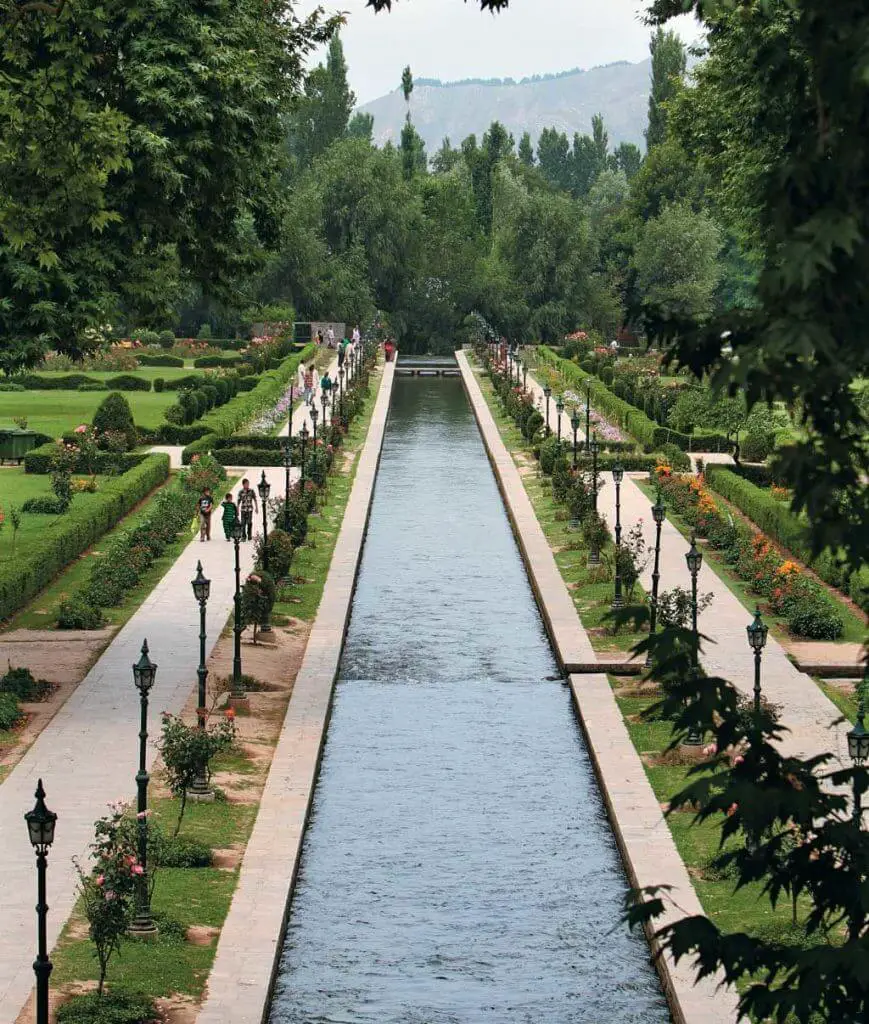
4. Verinag Garden, Anantanag
Another paradise-like garden in Kashmir is the Verinag Garden of Anantnag. An adaptation of the traditional char bagh layout that represents heaven as describes in the Quran, having four rivers of wine, honey, milk, and water.
The Garden is on a steep hillside with a water reservoir on top. The Garden is vast, with an area measuring 460 meters by 110 meters.
5. Humayun’s Tomb, New Delhi

It is the tomb of Mughal emperor Humayun, commissioned by Humayun’s first wife and chief consort empress bega begum. The top features a beautiful Mughal garden covering an area of 30 acres.
Aligned at the center on the eastern wall lies a baradari, literally a pavilion with twelve doors, which is a building or room with twelve doors designed to allow the free draught of air through it, finally upon the northern wall lies a hammam, a bath chamber.
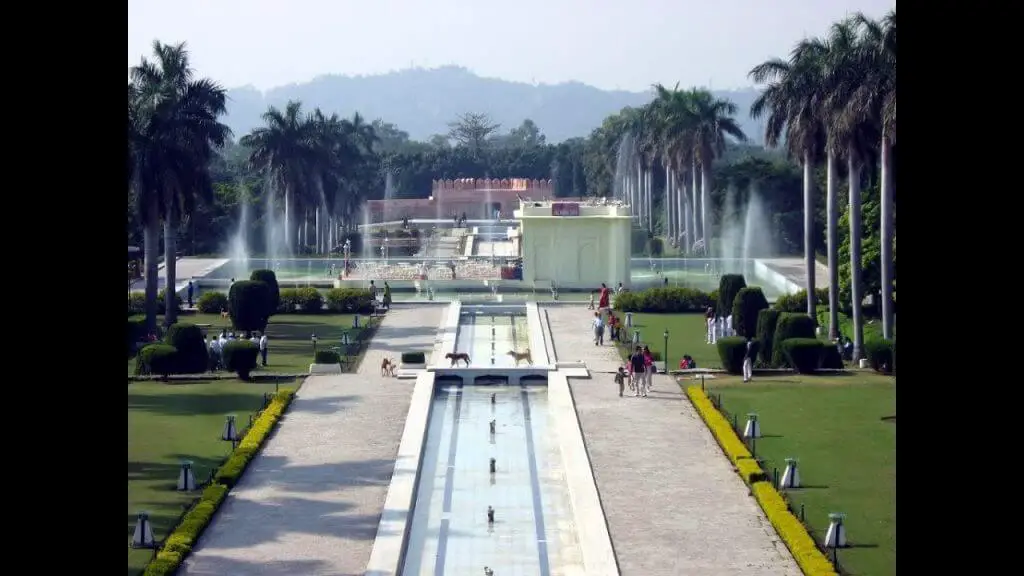
6. Yadvaindra Gardens, Pinjore
Yadvaindra garden, also known as Pinjore gardens, is a historic 17th-century garden located in Pinjore city Panchkula district, Haryana.
It is a three-story garden with sheesh mahal in first, rang mahal in second, and Jal mahal is the third, with fountains.

7. Safdarjung Tomb, New Delhi
It is a beautiful sandstone and marble mausoleum built-in 1754 in the late Mughal empire. The large Garden surrounding the tomb has an area of over 280 meters by 280 meters. The Garden includes wide footpaths and water tanks, further subdivided into smaller squares.
The towers or chhatris are octagonal. Its overall layout consists of four pavilions that have multiple chambers, and the entrance gateway to the east is impressive.
8. Khusro Bagh, Prayagraj
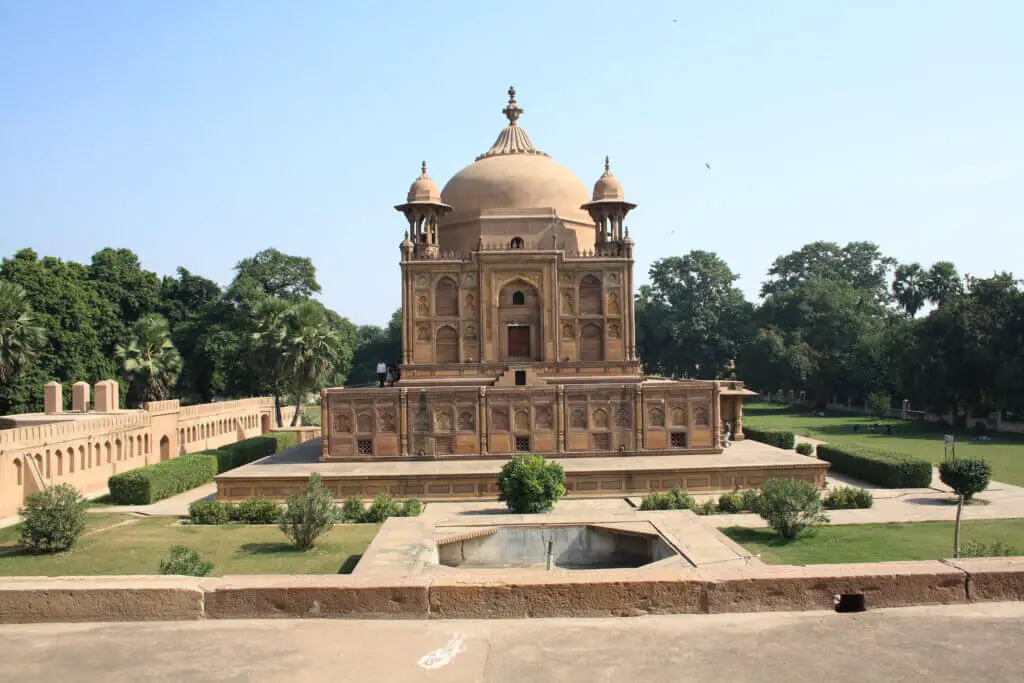
Khusro Bagh is a burial complex with large walls surrounding it. The three sandstone mausoleums within this walled Garden represent an exquisite example of Mughal architecture.
The design of its main entrance, the surrounding gardens, and the three-tier tomb of Sultan Begum have attributed to Aqa Reza, Jahangir’s principal court artist. It has three tombs, and the tomb of Khusrau is the last one of the three. Jahangir’s son Khusro was first imprisoned here within the Garden after he rebelled against his father.
9. Nishat Bagh, Srinagar
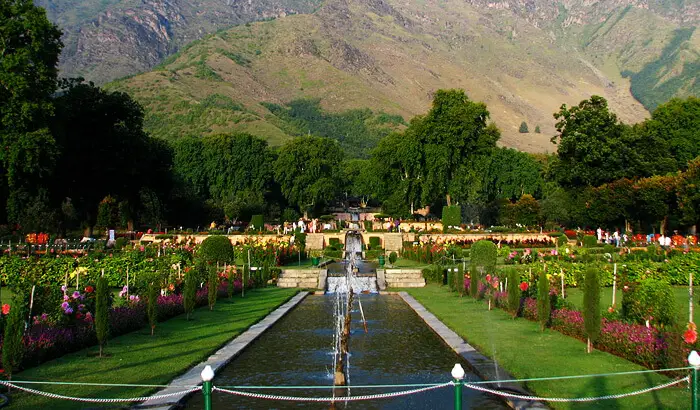
It is a terraced Mughal garden alongside the beautiful Dal Lake in Srinagar. It is the largest Mughal Garden in Kashmir valley that has an area over 46 acres. Nishat Bagh is an Urdu word that means ‘garden of joy’ ‘garden of gladness’ and ‘garden of delight.’
The layout of this Garden has an axial stream flow design instead of four radiating arms making a square pattern. The distinct feature of the Garden is its twelve terraces, representing twelve zodiac signs.
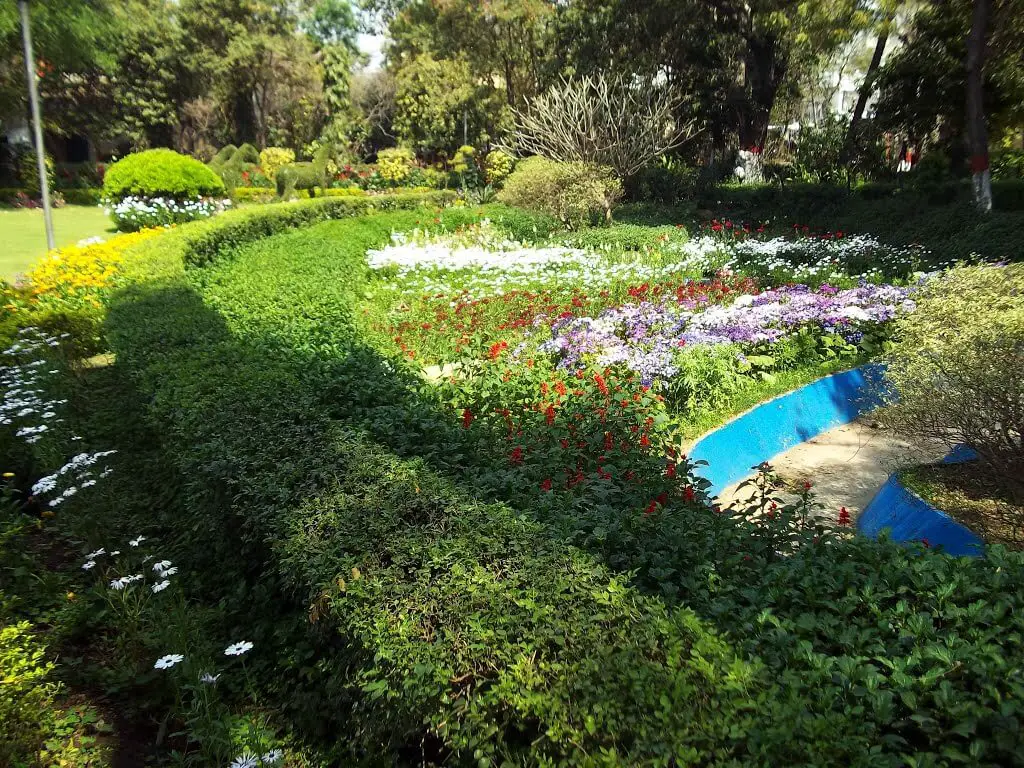
10. Roshanara Bagh
Roshanara garden, built by Roshanara Begum, the second daughter of Mughal emperor Shah Jahan is in Shakti Nagar, Delhi (near Kamla Nagar clock tower).
The Garden has a raised canal with flowering plants on both sides. It has a lake inside, which is a popular site for migratory birds in winter.
11. Chashme Shahi Garden, Srinagar

Chashme Shahi means the royal spring, build around 1632 AD. Ali Mardan Khan garden built this magnificent Garden. People believe the spring water has medicinal properties and the people who visit here fill water into vessels and take it with them.
The water then flows down through a water ramp (chadar) into the second terrace. The second terrace serves as a water pool, and a large fountain stands at its center. The water again flows down through a water ramp into the third terrace, which is a square five-fountain pool. It is the lowest pool at the entrance of the Garden.











